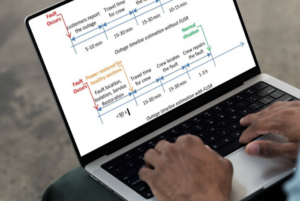
FLISR – Fault Location, Isolation, and Self Restoration
Introduction:
Improving grid reliability is one of the major goals of any electric power utilities, It helps to reduce economic losses and reduces customer inconvenience from power disruptions. FLISR is a Smart Grid functionality that helps to assure the quality of power supply in distribution network.
In situations of contingency, due to occurrences that result in interruptions of the power supply, it is indispensable to quickly minimize the number of affected customers until full-service re-establishment. By reconfiguring the distribution network, it is possible to isolate faults and transfer loads to other healthy feeders. There are different approaches of Distribution Automation (DA) that allow better monitoring and control of the electrical grids, making it able to take automatic decisions. One of the decentralized approaches to achieve this result is by utilizing FLISR.
Smart grid:
A smart grid uses digital technology to improve reliability, security, and efficiency (both economic and energy) of the electrical system from large generation, through the delivery systems to electricity consumers and a growing number of distributed generation and storage resources. A Smart Grid incorporates the benefits of advanced communications and information technologies to deliver real-time information and enable the near-instantaneous balance of supply and demand on the electrical grid. The vision of Smart Grid is to provide much better visibility to lower-voltage networks as well as to permit the involvement of consumers in the function of the power system, mostly through smart meters and Smart Homes.
A Smart Grid incorporates the features of advanced ICTs to convey real-time information and facilitate the almost instantaneous stability of supply and demand on the electrical grid. One significant difference between today’s grid and the Smart Grid is the two-way exchange of information between the consumer and the grid. Whenever an outage occurs in the distribution network, there may be partial or total block out of the system. Outages occurs due to unpredictable interruptions exist in a distribution system, it is very difficult to bring back the power system promptly to its initial state or to an optimal target network by switching operations. Self-healing is a major driving force in the smart grid vision. The optimum self-healing strategy is planned for the system for all possible future faults and optimum microgrids are designed.
What is FLISR?
FLISR technologies and systems involve automated feeder switches and reclosers, line monitors, communication networks, supervisory control and data acquisition (SCADA) systems, Remote terminal units, and data processing tools. These technologies work in tandem to automate power restoration, reducing both the impact and length of power interruptions automatically as quickly as possible.
In addition, the fault isolation feature of the technology can help crews locate the trouble spots more quickly, resulting in shorter outage durations for the customers impacted by the faulted section. The reduced number of customers interrupted (CI) and the associated customer minutes of interruptions (CMI) are the primary measured benefits of the technology.
Without a distribution automation solution like FLISR, outage must be handled manually, often resulting in an outage larger (in size and duration) than necessary. deploying decentralized FLISR makes it possible to improve coordination of switching devices already present for protection or sectionalization purposes on the electric power system and extend their utility into post-fault restoration. Below figure shows the outage timeline estimation with and without FLISR.
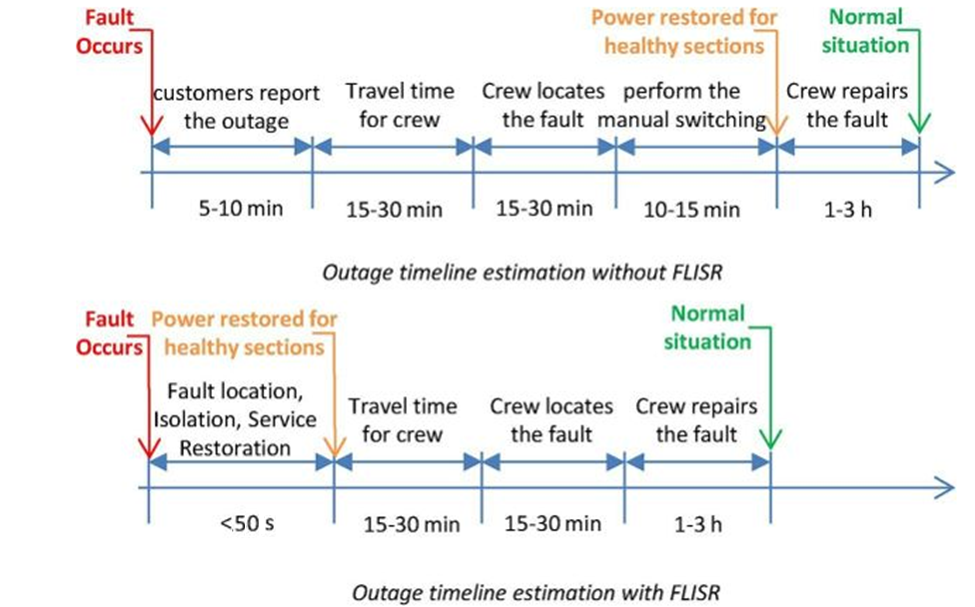
An important phase in the FLISR process is the location of the fault, which can be done by applying different techniques such as apparent impedance measurement, direct three-phase circuit analysis, superimposed components, traveling waves, power quality monitoring data, and artificial intelligence.
Decentralized self-healing:
FLISR systems with decentralized solution is the simplest to configure and fastest to deploy. They can be readily integrated into an existing distribution automation system. These systems typically operate in seconds and can be set up with the ability to “self-heal”—re-route power and shed non-essential load under multi-contingency situations.
Decentralized FLISR systems offer a high degree of scalability. One or two automatic restoration points can be added at a troublesome location on a feeder or the entire distribution system. It can be integrated with a variety of fault detection and sectionalization devices and operate faster than centralized FLISR systems.
With star network communication, each device can communicate to the master controller. Redundancy and self-diagnosis can be added for critical networks. Several safety features can also be incorporated to prevent automated switching while crews are working on the feeders.
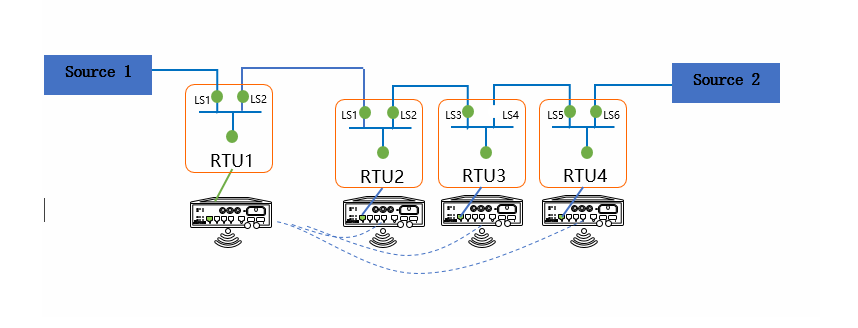
Unlike centralized FLISR systems, decentralized systems can be deployed without implementing a DMS or GIS. Though completely compatible with SCADA systems, decentralized FLISR systems don’t require a SCADA system to operate. Best suited for feeders with critical loads that require sub-second restoration, such as hospitals.
How Does FLISR Result in Fewer and Shorter Outages?
Below figure show how FLISR operations typically work. The FLISR system locates the fault, typically using line sensors that monitor the flow of electricity and measure the magnitudes of fault currents and communicates conditions to other devices and grid operators.
Once located, FLISR opens switches on both sides of the fault: one immediately upstream and closer to the source of power supply and one downstream and further away. The fault is now successfully isolated from the rest of the feeder.
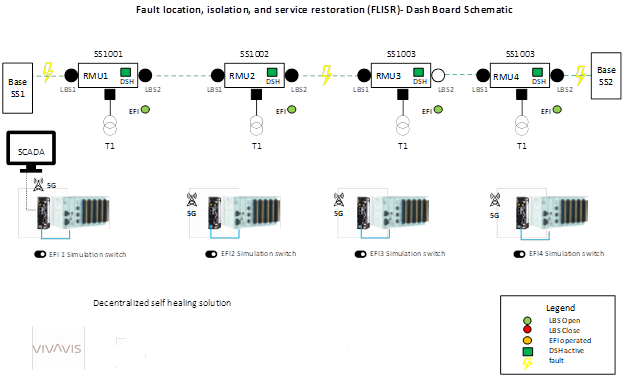
With the faulted portion of the feeder isolated, FLISR next closes the normally open tie switches to neighboring feeder(s). This re-energizes un-faulted portion(s) of the feeder and restores services to all customers served by these un-faulted feeder sections from another substation/feeder. The fault isolation feature of the technology can help crews FLISR systems operate autonomously through a distributed or central control system (e.g., DMS), or can be set up to require manual validation by control room operators. Implementing autonomous, fully automated FLISR systems typically requires extensive validation and calibration processes to ensure effective and reliable operations. Automated FLISR actions typically take less than one minute, while manually validated FLISR actions can take five minutes or more.
Consider the fault happen before RMU 1 and base station 1, upon detecting the fault by sensors the main controller checks whether all the prerequisites are met and are in safe to operate condition. We can add n number of interlocks and predetermine condition to make the system more reliable. Here in this case main controller first isolate the fault by opening the LBS1 in SS1001 and then close the LBS at ring off station at SS1003 there by restoring the supply from base station 2. All the operation take place typically in less than 50 second.
ACOS750 RTU, VIVAVIS automation and telecontrol technology of the ACOS 7 series offers high-performance devices and systems, especially for the utilities sector. All devices from the ACOS 7 series meet the highest security requirements according to the BDEW white paper. VIVAVIS is one of the few committed companies working towards power transmission and distribution systems improvement worldwide. We are confident that our vast domain experience in the field of power transmission & distribution coupled with state-of-the-art, cutting-edge technology.
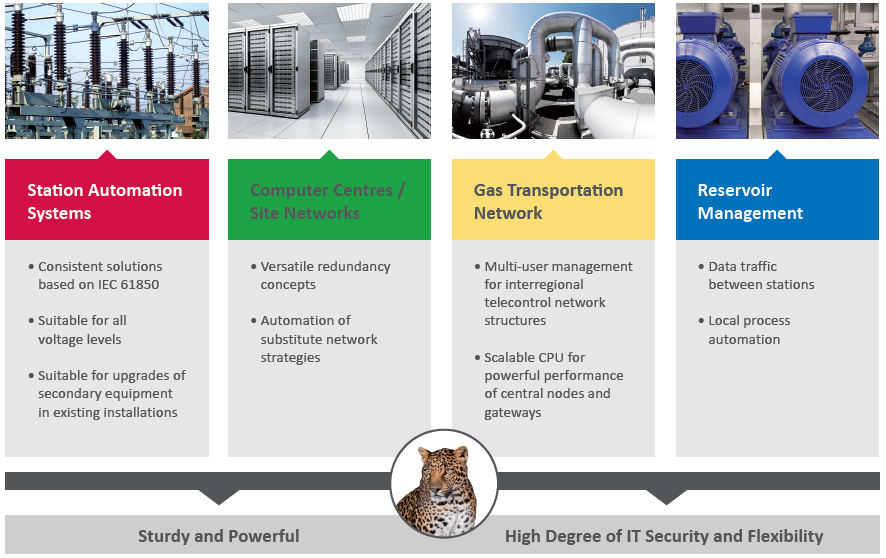
ACOS 750 is a modular system with multi-processor capability, consisting of a module rack, power supply, CPUs and connected communication, interface and process I/O modules. Installation of system components is type-dependent and can be done through connection to the module rack.
As an option, process I/O modules can be connected in a decentralized manner via copper or FO cables. For this purpose, system modules based on standard Ethernet and solutions via FO cable are available. This makes ACOS 750 easily configurable, scalable and expandable.
The system bus technology based on EtherCAT® enables ACOS ET to distribute the process modules peripherally and to implement different topologies (linear, tree or star topologies) with almost unlimited network size. Segments with standard modules and compact modules can be combined freely. Similarly, standard Ethernet and fiber optic connections within a system can be combined.
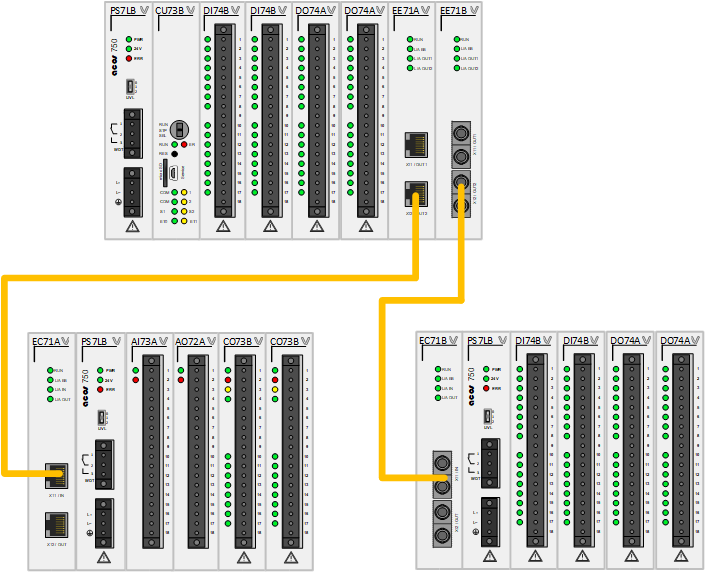
ACOS 750 uses telecontrol protocols according to IEC 60870-5-101/103/104, IEC 61850-8-1 and DNP3. Additionally, the standard field bus protocols Modbus RTU/TCP and Profibus DPV0 are supported. The integrated PLC functionality on a CODESYS® V3 basis enables users to implement complex automation and programming tasks according to IEC 61131-3.
ACOS 750 support various redundancy concepts like Redundant central gateways, Redundant central processing units (CPUs), Redundant communication pathways and Redundant power supply. It can operate in harsh environments up to 70 degree Celsius. This make the ACOS750 RTU as a market leader in telecontrol technology.
FLISR System Architecture using ACOS 750 RTU’s:
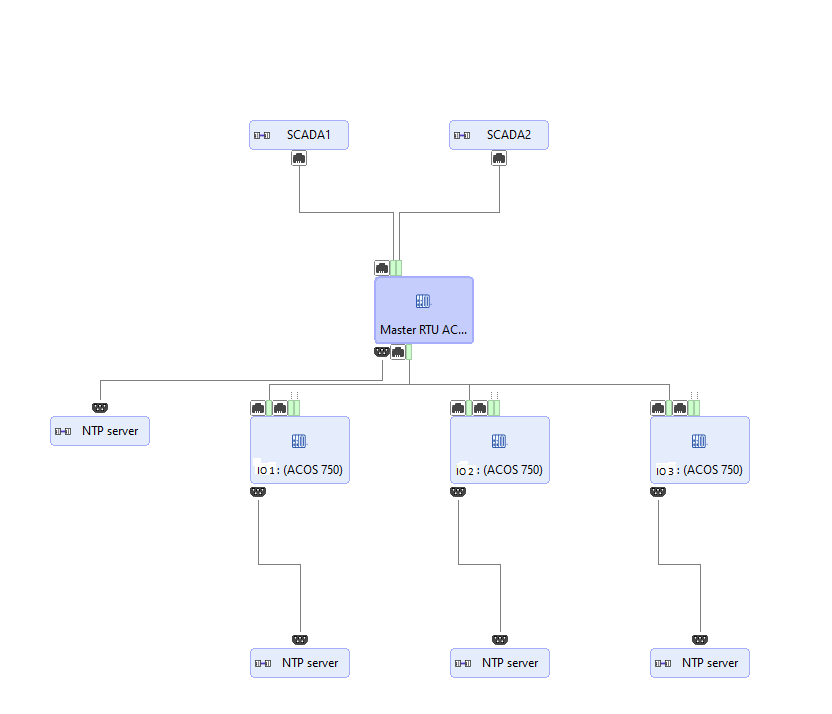
All logic implementations will be done on Master RTU, to make the system more available redundant systems can be provided. Master RTU communicates with remote RTU over client server architecture. IEC104 by-directional communication will be established between master and clients. Master RTU control and monitor the client RTU and client response to master request. Provision will be available in master RTU which helps the SCADA operator to select the field RTU in decentralized mode or as centralized mode.
Consider there are 4 RMUs in the ring and all four RMUs are controlled by the RTUs. In decentralized FLISR solution proposed by VIVAVIS. Each RTU can be controlled individually from SCADA or can be automated to work in decentralized self-healing mode. Each RTU will communicate to SCADA in normal mode as well as in decentralized mode, however when the stations are selected as decentralized mode the operation will be done automatically, and notification will be sent to SCADA with complete details of action.

Yet another essential component for successful FLISR operations is the communications network for remote monitoring and control of technologies and systems. FLISR communication networks require increased resilience because they must operate under conditions where the grid itself is damaged or not functioning properly. The two-way communications network must have sufficient coverage and capacity to interface and interoperate with a wide variety of technologies and systems. Communication networks can be either achieved on fiber optics or using 5G technology. Both technologies are proven to work and have a latency of less than 50 seconds.
CONCLUSION:
The idea of remodeling currently existing grids into Smart Grids allows us to implement FLISR automation, which is a reliable solution to enhance grid efficiency, reliability, and security. However, the best results are obtained while considering the distributed architecture of FLISR automation, due to the greater opportunities for monitoring the system and its scalability and compatibility with modern grids.



